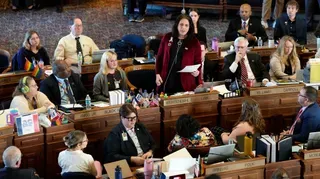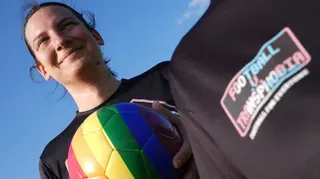June 8, 2013
CDC Says Testing Makes Us Stronger
Winnie McCroy READ TIME: 3 MIN.
Rates of new HIV infections are skyrocketing among young men who have sex with men (MSM) of color, and on HIV Testing Month, the Centers for Disease Control and Prevention (CDC) have launched Testing Makes Us Stronger, part of their broader Act Against AIDS awareness campaign. The bottom line: get tested!
"Testing Makes Us Stronger is designed to reach black gay and bisexual men in cities that are heavily affected by HIV, encouraging them to take a stand against HIV by getting tested," said William L. Jeffries IV, (PhD, MPH MA), an epidemiologist in our Division of HIV Prevention. "Despite this heavy burden, CDC data tell us that most black gay and bisexual men living with HIV do not know they are infected. Knowing your HIV status is a powerful tool, whether you test positive or negative, you can use that knowledge to better care for yourself and your loved ones."
Testing Makes Us Stronger succeeds because it was designed by black gay men for black gay men, and encourages HIV testing among those aged 18-44. The campaign was launched in 2011, and gets traction via national online and magazine ads, transit ads and billboards, and Facebook, Twitter and blogs.
Studies in major cities indicate that nearly one in three gay black and bisexual men are infected with HIV, and 59 percent don't even know it. From 2006-2009, new infections among this group increased by 48 percent, despite fewer sex partners and less drug use, which are lower risk behaviors.
Some have posited that this trend can be attributed to the tendency of these men tend to engage in sexual relationships within a smaller community of MSM. Others note that lack of access to health care, unemployment, racism, depression and stigma play a part. There may also be a link via sexual relationships with older men, who are more likely to have HIV.
"Not everyone with HIV looks sick, and many people who are infected don't know it. HIV testing is the only way to know for sure if you are infected," said Jeffries.
The truth is, you can't know who has HIV by looking. You can't even tell if you have HIV solely based on the fact that you "feel fine." The first step to protecting your health is getting testing and knowing your status.
The CDC suggests that people get tested annual, with MSM getting tested every 3-6 months. There is a window period after you gets infected, but before HIV shows up on the test, during which you are highly infectious to others.
Stigma still surrounds those living with HIV, but knowledge is power. Knowing your status helps you protect yourself and your partners. The CDC has tools to help learn about talking about your status with family, friends and partners or anyone who you may have shared needles with.
In addition, new studies are revealing that the way to keep HIV at bay is to treat early. Getting medication can help you live a long life, and may even lower HIV to undetectable levels in your blood.
The CDC's Act Against AIDS campaign uses TV and radio public service announcements, physician communications and partnerships with leading non-profits and private orgs to reach those most at risk for HIV. Recent CDC data shows that about 50,000 Americans are newly infected by HIV each year. Also on the rise is complacency about HIV among those who no longer view it as a health threat.
They have also funded state and local health departments to spread this message, and have awarded $55 million to 34 strong CBOs with strong links to these populations. It will be used to provide HIV testing to more than 90,000 young MSM and transgender youth of color.
For more information, visit http://www.cdc.gov/hiv/ or http://www.hivtest.cdc.gov/stronger/index.html
Winnie McCroy is the Women on the EDGE Editor, HIV/Health Editor, and Assistant Entertainment Editor for EDGE Media Network, handling all women's news, HIV health stories and theater reviews throughout the U.S. She has contributed to other publications, including The Village Voice, Gay City News, Chelsea Now and The Advocate, and lives in Brooklyn, New York.







